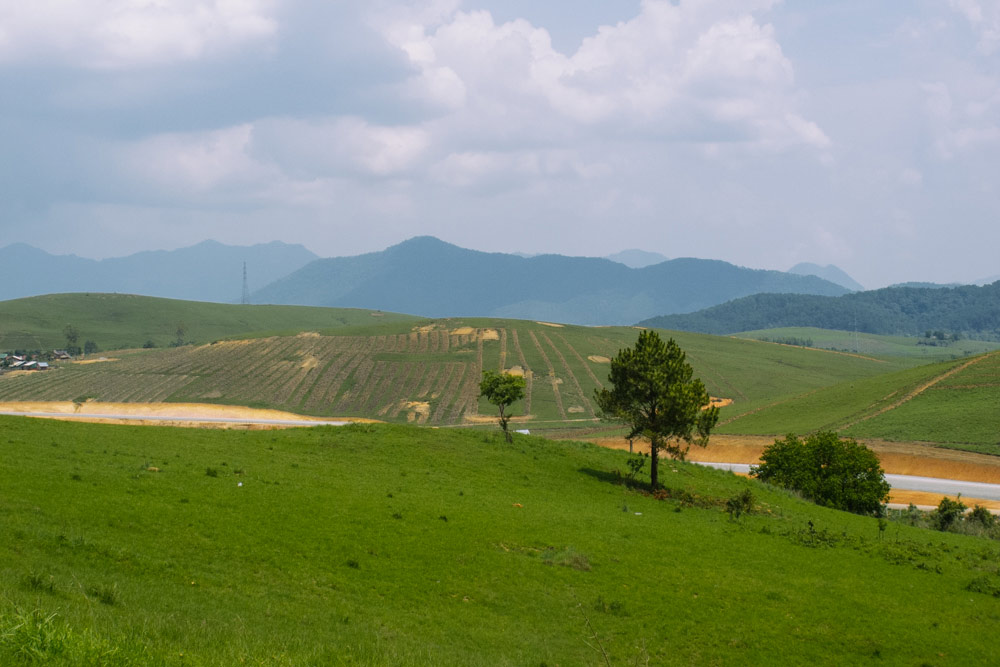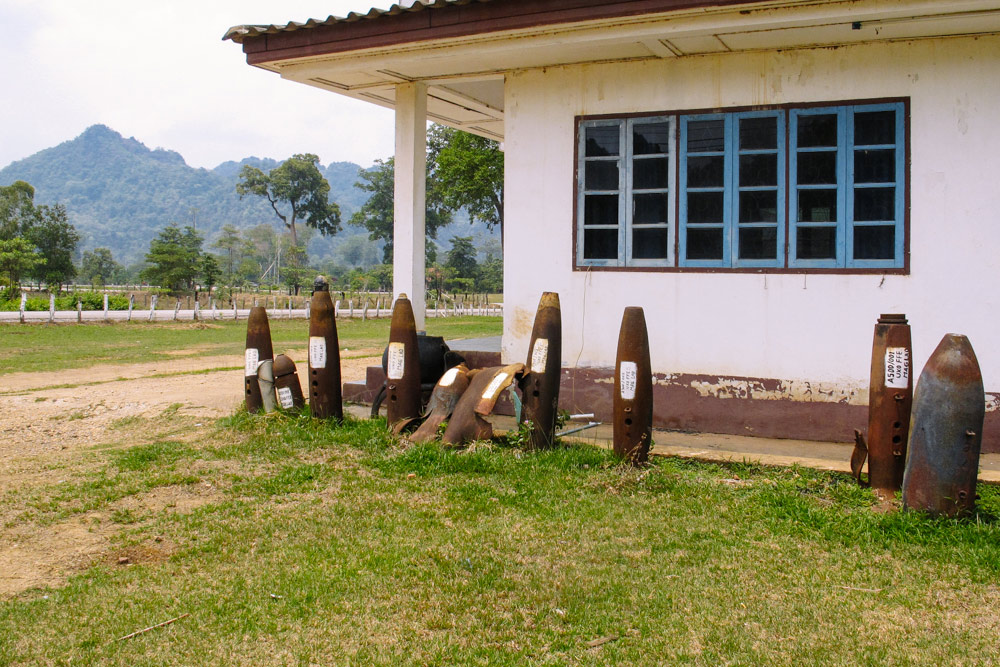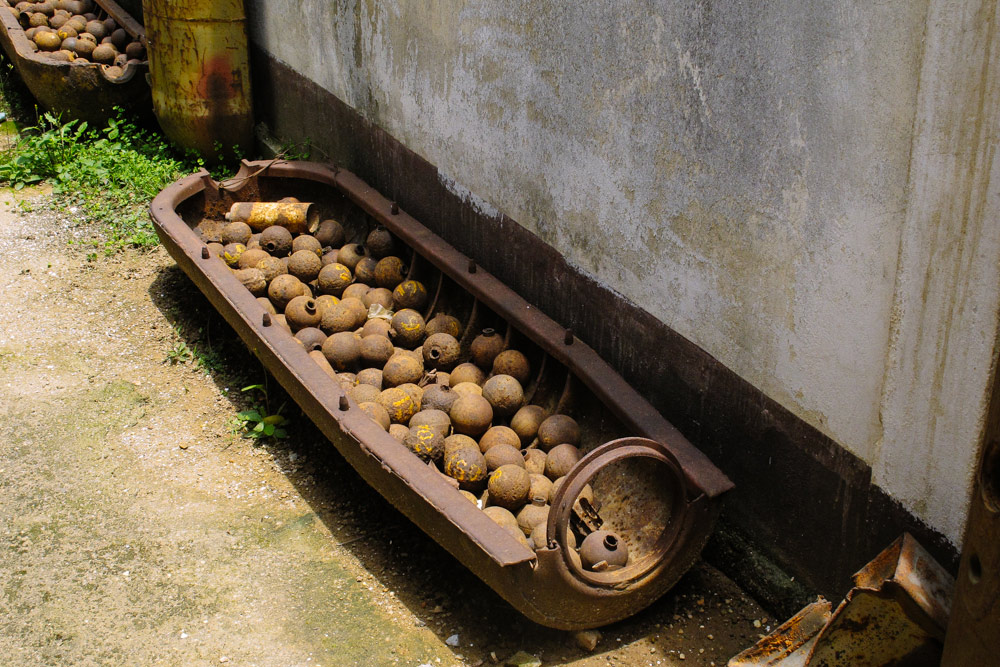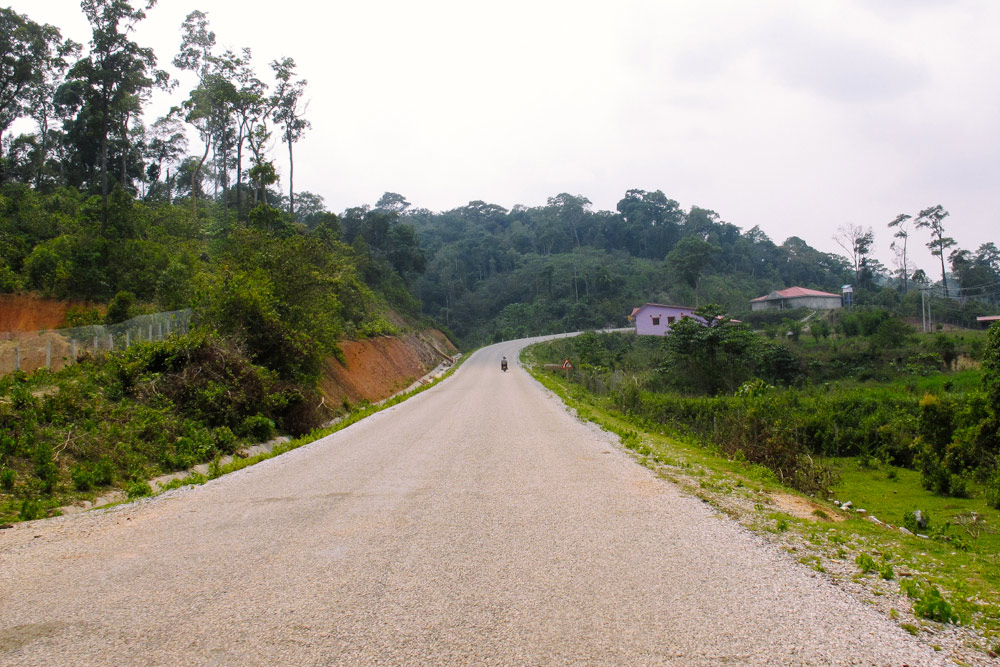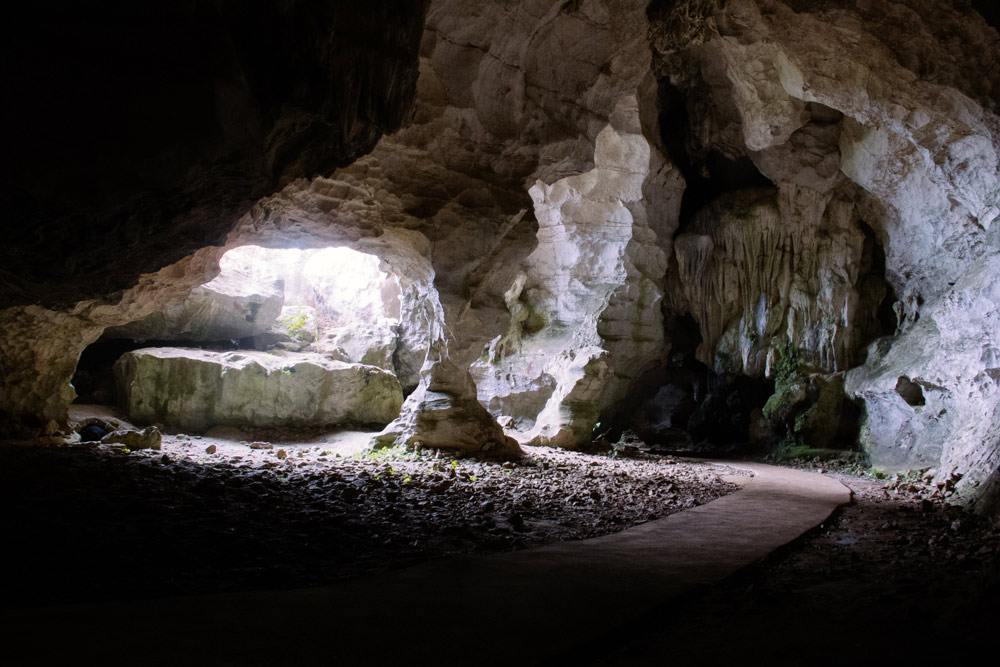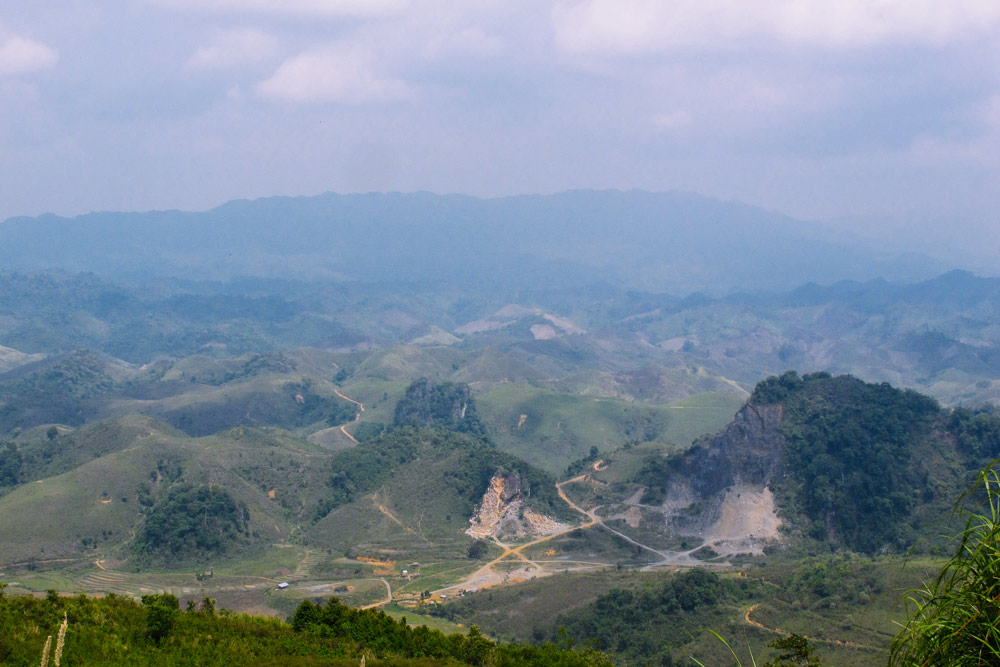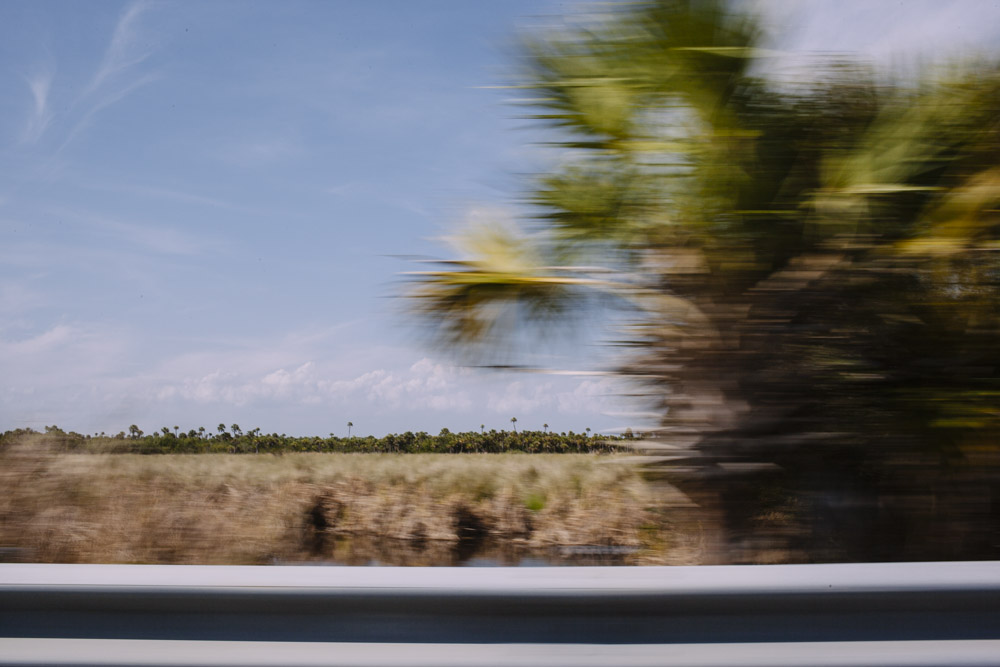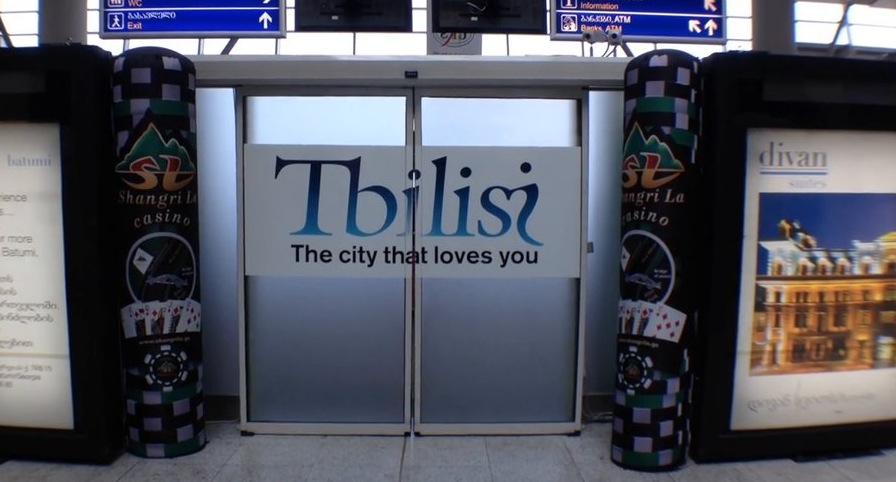Laos is the most bombed country on earth. Ever. Statistics publicized by Mines Advisory Group (MAG) put the precise number at one planeload of bombs, every 8 minutes, 24-hours a day, for 9 years. That’s about 2 million tones of ordnance.
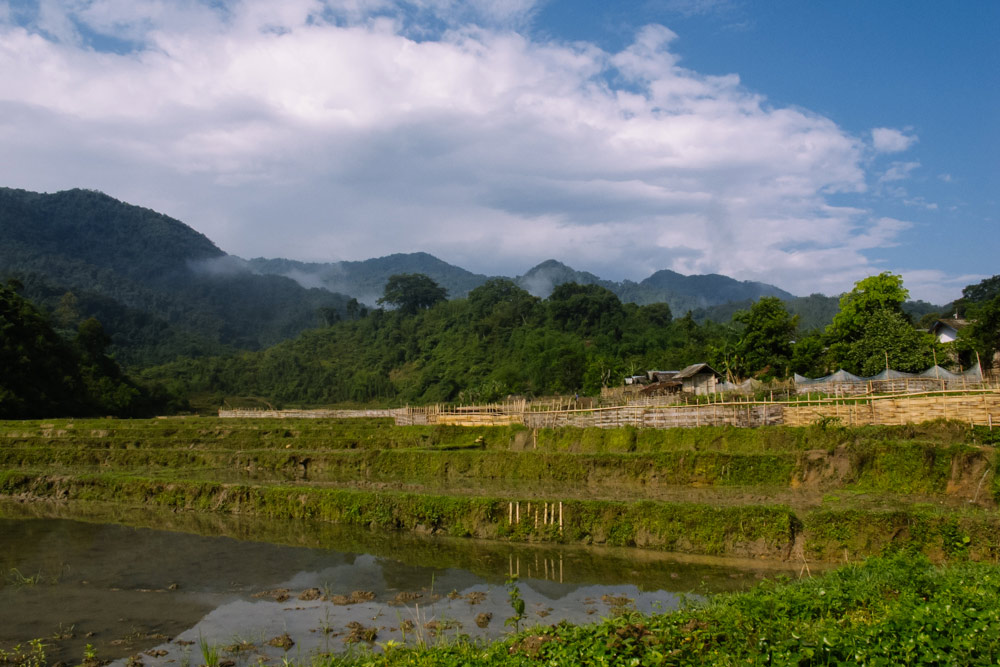 The countryside of Laos — sadly contaminated by UXO today. Phonsavan, Laos.
The countryside of Laos — sadly contaminated by UXO today. Phonsavan, Laos.
Unless you’ve traveled Southeast Asia, this fact might be a revelation. It was for us. The bombing campaign over Laos went on for almost a decade in secret. Today, much of the world is still unaware that Laos ever suffered any significant military action. But, the minute you enter Laos, it becomes abundantly clear that the country has been exposed to intense war violence – MAG and Unexploded Ordnance (UXO) Trauma Centers are a typical presence across towns, villages, and countryside, while bomb casings are frequently utilized for household use: everything from decorations and planters to house foundations is made out of used bombs in Laos.
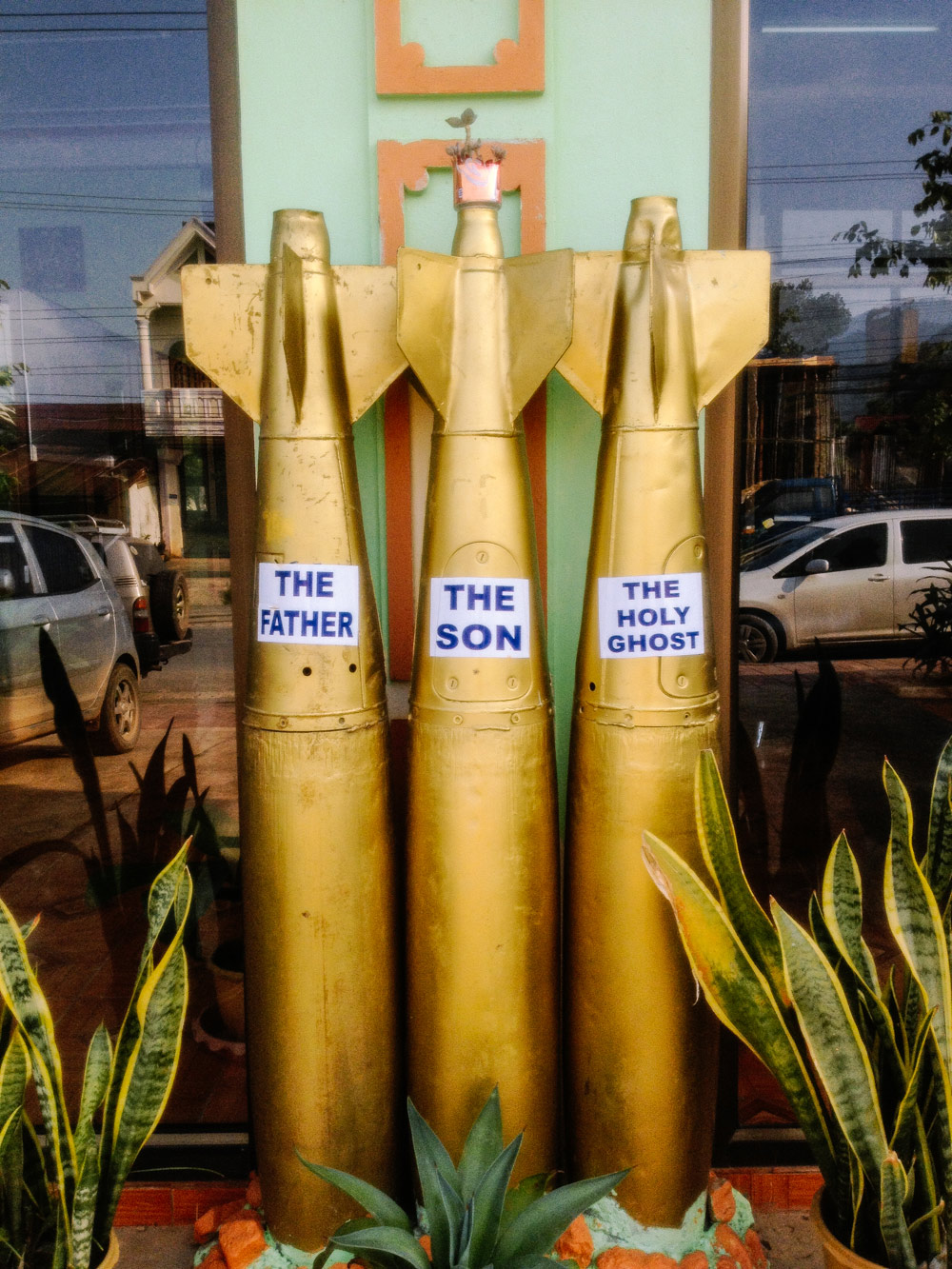 Discarded and recycled ordnance is just a fact of life in Laos.
Discarded and recycled ordnance is just a fact of life in Laos.
We traveled Laos South to Northeast, reaching the plains of Phonsavan towards the end of our three-week journey across the country. The rolling hills of paradise, as the locals call this high altitude part of the country, suffered the brunt of the bombing campaign during the Vietnam War. The legendary Plain of Jars sites are not only covered with mythical stone urns fashioned thousands of years ago by giants (per local legend), but also carry pot marks of hundreds of bomb craters.
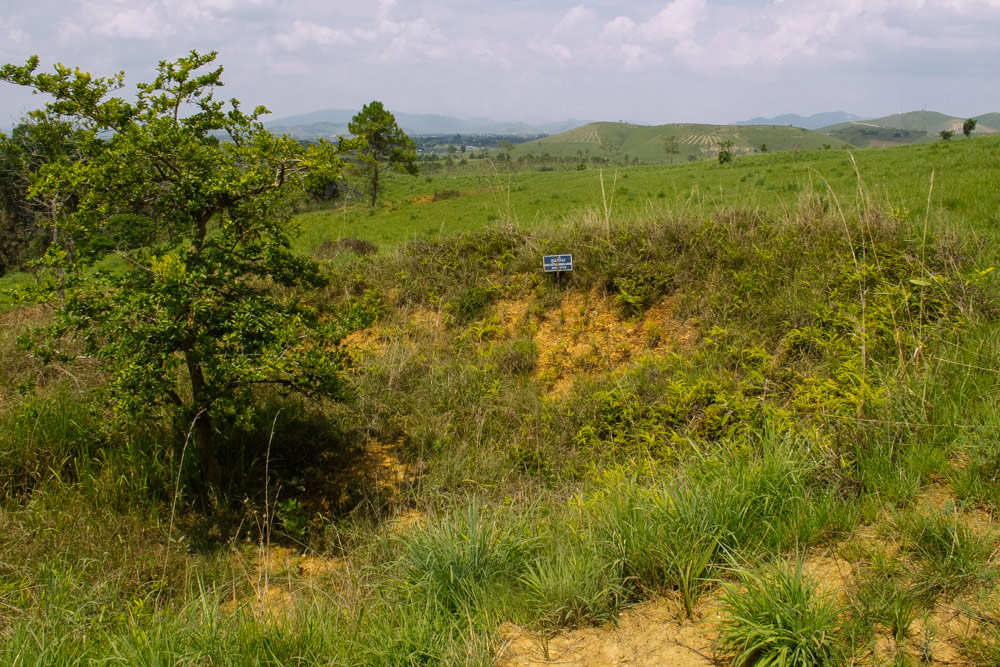 Bomb craters in the country side of northeast Laos – sadly, a common sight.
Bomb craters in the country side of northeast Laos – sadly, a common sight.
The scarred earth is unfortunately the most benign reminder of the Secret War. Estimates vary, but as many as one third of the cluster bombs dropped on Laos (so, around 700,000 tons of ordnance) did not explode on contact. Today, decades after the bombing halted, tiny bombies – golf sized yellow balls full of shrapnel – pepper the muddy fields and grow with the jungle tree branches, ready to explode at the moment of contact. As a result of UXO, ordinary development – from rice tilling to house building, and even children’s play – is a deadly proposition for thousands of Lao villagers. Over a hundred people are still maimed and killed by bombies every year. About 60% of accidents result in death, and 40% of the victims are children. This is happening today, in 2015, over 40 years since the end of the war.
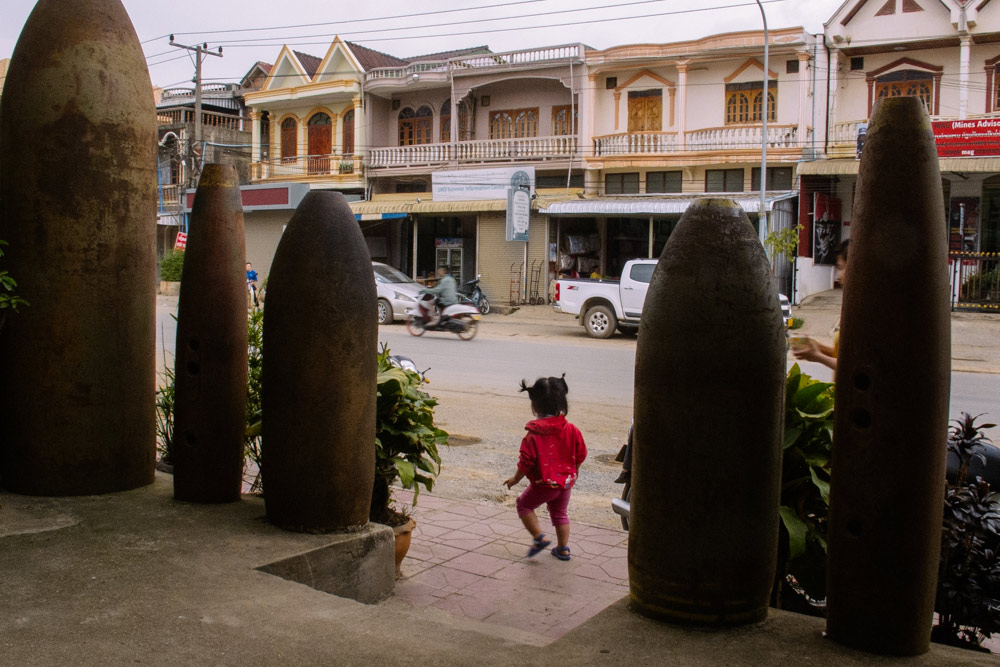 Not so secret scars of the War on display in downtown Phonsavan, Laos.
Not so secret scars of the War on display in downtown Phonsavan, Laos.
So what happened, and why….these questions kept spinning through our mind with every bomb crater and MAG sign that we came across.
The Basic Facts
The basic facts are that from 1964 to 1973, US Presidents Lyndon B. Johnson and Richard Nixon authorized the American military air strikes in Laos despite the fact that Laos had signed the international Neutrality Accord in 1962. The military campaign was also conducted in secret from Congress, the American public, and even the US army men who fought across the border in Vietnam. Hence the moniker – the Secret War.
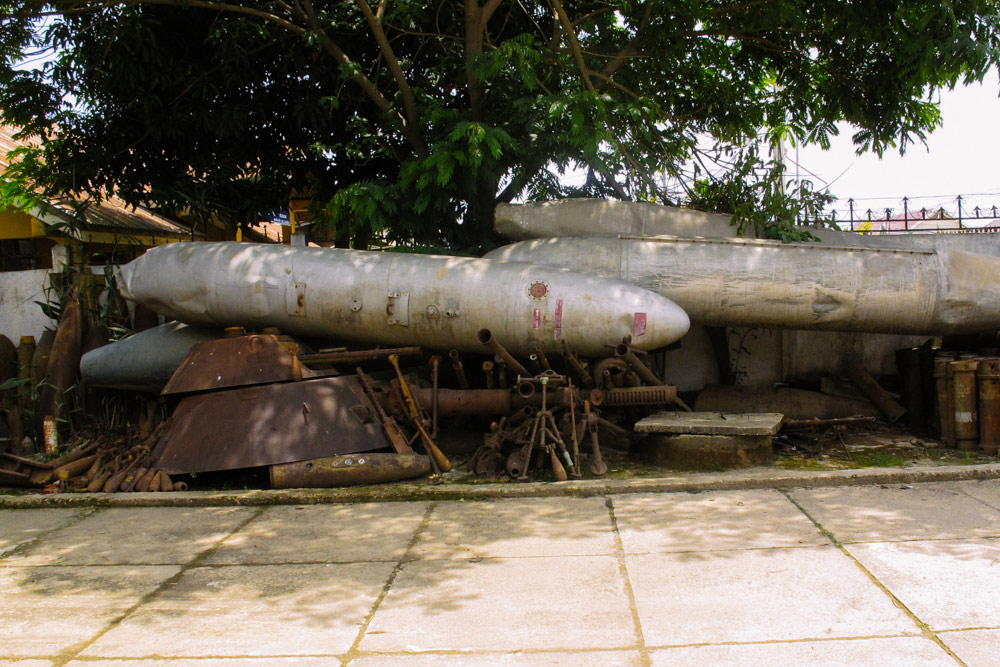 Diffused bombs on display in Phonsavan, Laos.
Diffused bombs on display in Phonsavan, Laos.
the path forward during the cold war
Beyond this simple description, the origins and motivations behind the Secret War on Laos are more murky and complicated. Laos was propelled to independence from the French colonial rule in 1954, mostly as a result of the Vietnamese national struggle. The Indochina region was in disarray, and Laos itself had had no clear path forward. Large swathe of Lao elite backed sovereign monarchy, but a few broke for the left-leaning communism – an ideology that was gaining popularity as Soviet Union actively promoted its reach in the region. Others in Laos’ government favored ambiguous neutrality. The last King of Laos, Sisavang Vatthana, formed a coalition government with three princes each backing one of three ways forward. In 1962 Laos signed an International Treaty of Neutrality to try an avoid involvement in an open military conflict.
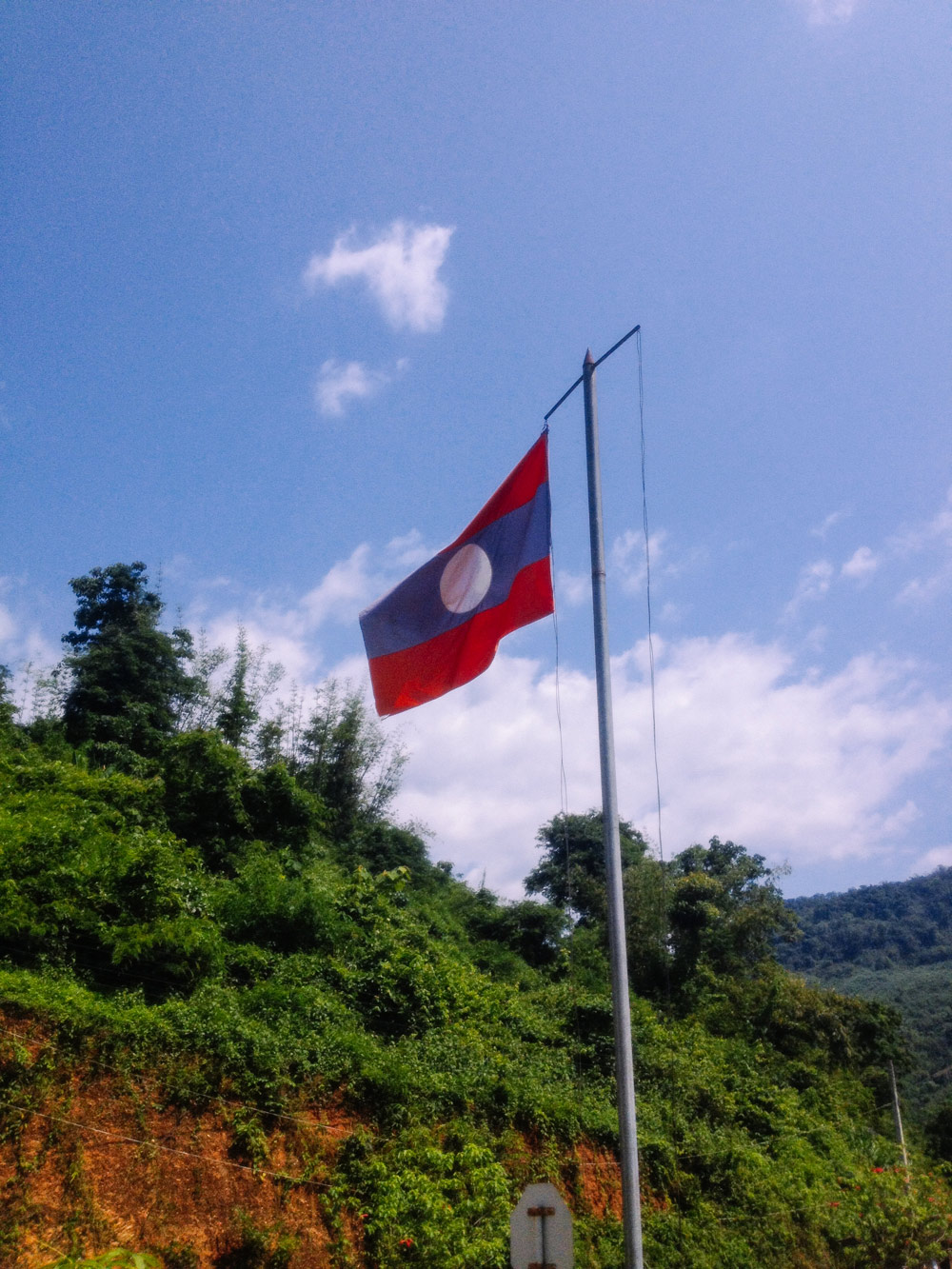 The country’s flag flies above the countryside in the northeast Laos.
The country’s flag flies above the countryside in the northeast Laos.
In hindsight, with the Cold War ideological struggle between the US backed capitalist democracy versus Soviet Union communism spilling far outside the borders of Europe and into the rest of the world, particularly Asia – Laos stood no chance of remaining neutral.
vietnam – american war
Soon after the French withdrawal from Indochina, the US got involved in Vietnam backing local national forces against the communist Viet Cong supported by the Soviet Union (mostly via financial aid and arms shipments, rather than boots on the ground). The US involvement saw thousands of American soldiers fighting in Vietnam.
The problem was that the Viet Cong had de facto occupied large parts of Laos, along the shared border of the two countries, with tunnels and paths boring through the jungle used by the Viet Cong to supply their supporters in Southern Vietnam. Today this is known as the Ho Chi Minh trail. As the the Viet Cong spread across Laos, they also mingled and infiltrated the Pathet Lao – communism supports in Laos – seeing them as a natural ally. By the time King Sisavang Vatthana signed the Neutrality Convention, the Viet Cong were effectively in control over large swathes of the Laos’ territory and were actively supporting and directing the communist struggle against the Laos’ monarchy.
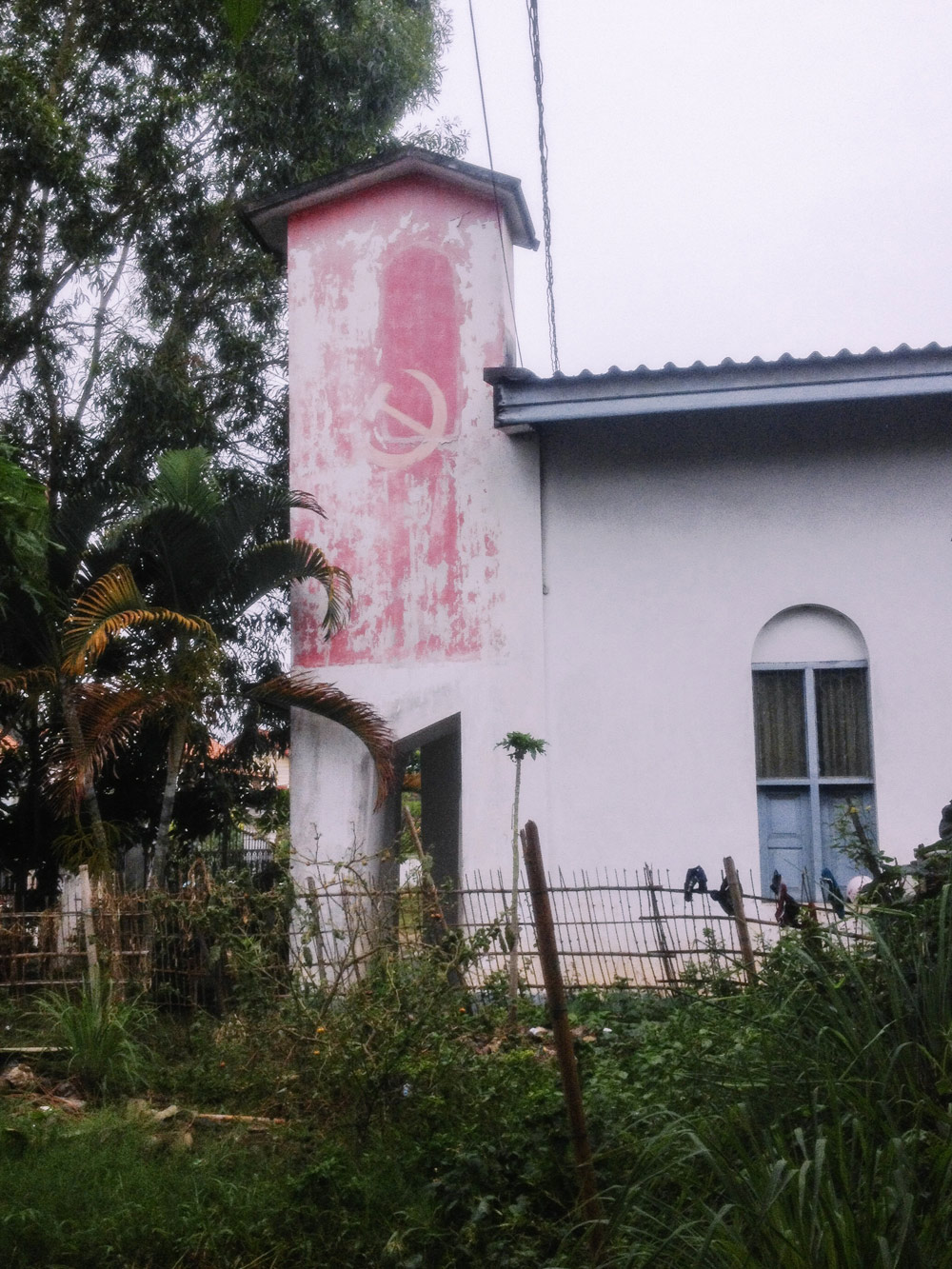 Sights along the Ho Chii Minh trail in today’s Laos.
Sights along the Ho Chii Minh trail in today’s Laos.
For the US, this was a serious problem, not only were the Viet Cong using neutral Laos territory to keep their forces and military supplies flowing freely, but they were also fanning the spread of communism across the region.
the secret war in laos
The US Central Intelligence Agency (CIA) got involved, recruiting Lao General Vang Pao, who in turn enlisted thousands of Hmong villagers into a Secret Army to fight the pro-communist Pathet Lao. Vang Pao’s ground forces were financed by the CIA, and supported by US bomber jets, with the struggle playing out over the high altitude plains and karst peaks of northeast Laos, and down along the Ho Chi Minh trail. Bombies rained on Laos like there was no tomorrow for 9 years.
Vang Pao’s forces spent over a decade spread across the Plain of Jars, entangled in a vicious struggle against the Pathet Lao. The fighting would go on during the dry months of the year, while the summer rains would wash away the territorial gains made by either side. The Pathet Lao were undeniably better equipped though — from the financial to aerial support, as well as, shelter found inside the massive karst caves on the border with Laos. Today, the government has turned these hideout camps into a museum to the struggle, and although it portrays just one side of the civil conflict, it still provides a fascinating look at this part of Laos’ national history.
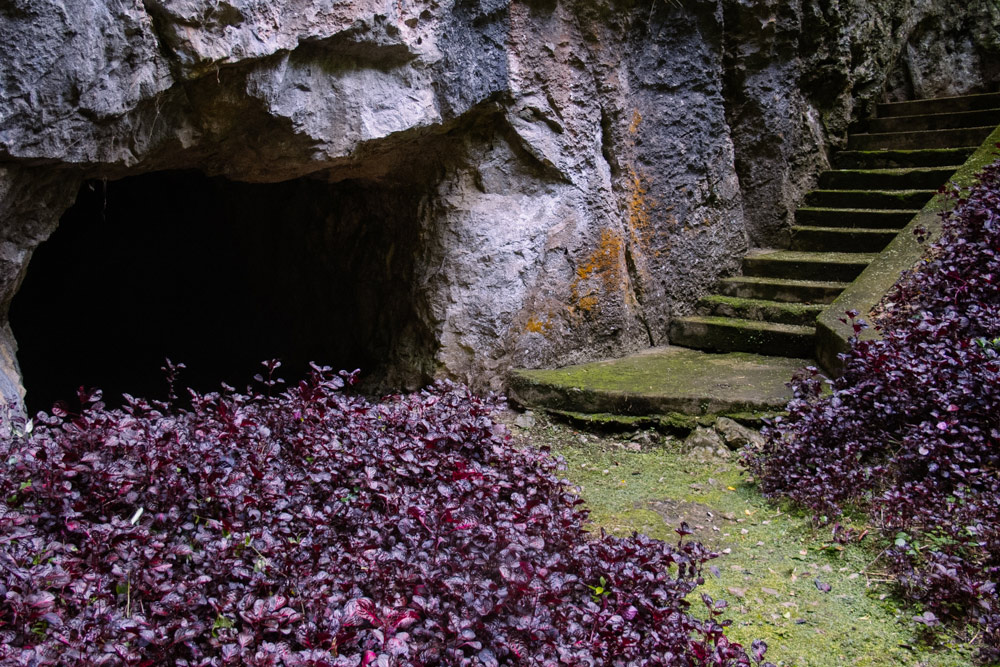 Pathet Lao used massive caves as hideouts during the civil war. Vieng Xay, Laos.
Pathet Lao used massive caves as hideouts during the civil war. Vieng Xay, Laos.
As the US winded down its military struggle in Vietnam, and the bombing campaign wrapped up, Vang Pao and his devastated army stood no chance. In 1975, Pathet Lao took the Plain of Jars, then Luang Prabang, and finally Vientiane in quick succession.
Laos monarchy – officially reigning for 600 years – was declared over on 2 December 1975. King of Laos, Sisavang Vatthana was sent packing to an internment camp, where he met his end sometime between 1978 and 1984. The Hmong tribal villagers fared no better, thousands perishing by death squads. Some managed to escape, many others hid out in the hills. No one quite knows how many Hmong remain in hiding; in 2006, several hundred Hmong fighters and their families came out from the hills hoping for clemency, but instead were arrested never to be seen or heard of since.
the (secret) legacy
So this, in a nutshell, is the legacy of Secret War in Laos. From contamination by bombies to vengeance over what was essentially a civil war conflict instigated by outside forces, Laos is still reeling from the impact some 40 years after the last military reconnaissance flight over its territory.

